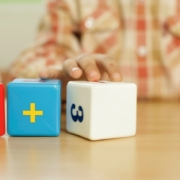Subtraction – One Digit Lesson Plan for Teachers
Lesson Title:Subtraction – One Digit
Lesson Objective: Students will be able to solve one-digit subtraction problems and understand the concept of borrowing when subtracting.
Materials: Whiteboard, dry-erase markers, number cards (0-9), subtraction worksheets, manipulatives (e.g. base ten blocks, counters)
Introduction (5 minutes): Begin the lesson by asking students if they know what subtraction is. Allow students to share their understanding of subtraction. Write a few examples of simple subtraction problems on the whiteboard (e.g. 5 – 3 = 2, 8 – 4 = 4)
Direct Instruction (10 minutes): Explain to students that subtraction is when we take away one number from another number to find the difference. Write the problem 8 – 3 = ? on the whiteboard and have students suggest ways to solve it. Model different methods for solving the problem using number cards or manipulatives such as base ten blocks or counters. Introduce the concept of borrowing when one of the digits in the problem equals or is less than 0. Write the problem 9 – 5 = ? on the whiteboard and demonstrate how to borrow and find the correct answer.
Guided Practice (15 minutes): Divide students into small groups. Give each group a set of number cards and have them work together to solve simple subtraction problems. Monitor the groups and provide feedback as needed. Provide assistance with borrowing when necessary.
Independent Practice (20 minutes): Hand out a subtraction worksheet to each student with one-digit subtraction problems. Ask students to solve the problems on their own. Provide additional support to students who need it. Collect the worksheets and provide feedback to students.
Closure (5 minutes): As a class, review the concept of borrowing when subtracting. Ask students to share any strategies they used to solve the subtraction problems. Remind students that practice is important for understanding and solving subtraction problems.
Assessment: Observe the students during the independent practice to assess their understanding of solving one-digit subtraction problems and borrowing. Collect and review the worksheets to assess students’ ability to solve one-digit subtraction problems and understand the concept of borrowing.
Note: The above is just a general guide, adjust duration and activities according to the class size and student’s level of understanding.










